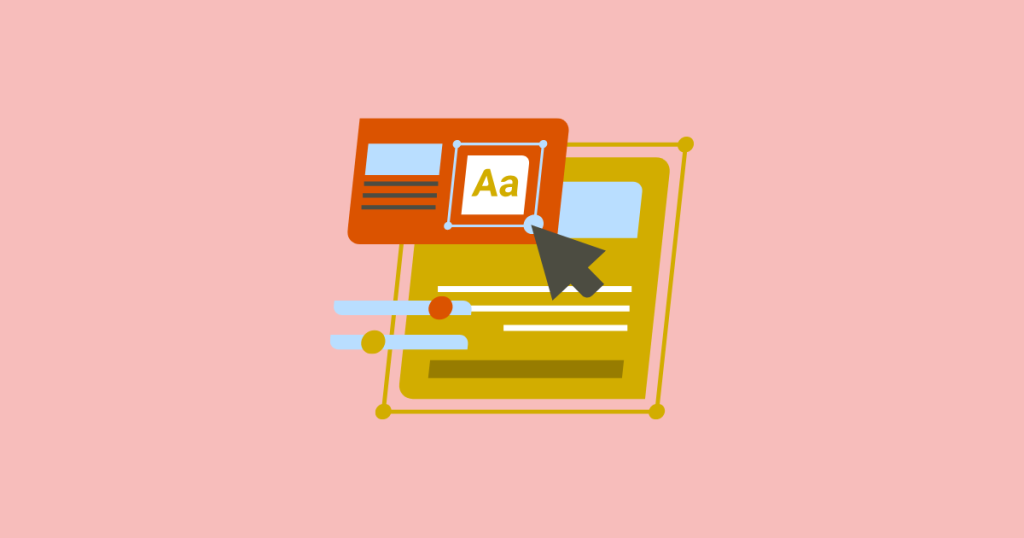Do you know how to differentiate Design Sprint vs. Design Thinking vs. Agile Scrum if someone were to ask you?
Yeah, that’s what I thought.
And the funny thing is, these three approaches are complementary, not interchangeable.
Yet each has a distinct purpose, cadence, and set of outcomes that matter at different stages of product development.
If you’re trying to decide what to use and when, keep reading. We’ll break it down clearly. Short phrases. Clear separation of ideas.
Let’s get it!
Design Sprint vs. Design Thinking vs. Agile Scrum

While all three aim to improve how teams solve problems and deliver results, they differ in speed, scope, and the type of challenges they address.
Side-by-Side Comparison
| Aspect | Design Sprint | Design Thinking | Agile Scrum |
|---|---|---|---|
| Primary Goal | Validate a solution fast | Find the right problem and explore solutions | Deliver working product increments reliably |
| Timebox | Days | Variable | Weeks per sprint, ongoing |
| Output | Tested the prototype and the decision | Insights, concepts, and defined opportunities | Deployed or deployable increments |
| Risk Focus | De-risk before building | De-risk problem framing | De-risk delivery and integration |
| Decision Moments | Explicit go/kill/iterate at the end | Converge after discovery/ideation cycles | Prioritization of each sprint, release decisions are often |
Another short separator. Teams often ask, “Which should we choose?” Here’s a practical way to decide based on your situation.
1. What Each One Is, In One Sentence

Design sprint: A time-boxed, 4–5-day process to align a team, prototype a solution, and test it with real users before you invest in building it.
Design thinking: A human-centered problem-solving mindset and toolkit for deeply understanding users and creatively exploring solutions.
Agile scrum: A structured, iterative delivery framework for building and releasing working increments of a product in short sprints.
2. Core Purpose
✅Design sprint: Reduce risk fast by validating a solution concept with users in days, not months.
✅Design thinking: Frame the right problem and generate high-quality, user-centered solution options.
✅Agile scrum: Deliver value continuously by planning, building, and releasing in reliable cycles.
3. Time Horizon and Cadence
✅Design sprint: 4–5 consecutive days. One-and-done per question, repeat as needed.
✅Design thinking: Variable. It can be a few hours to months, depending on depth and scope.
✅Agile scrum: Ongoing sprints, typically 1–4 weeks, repeating as long as the product evolves.
4. Who’s Involved

Each approach brings different people to the table, and the mix of roles shapes how decisions are made and ideas move forward.
Design Sprint:
In a design sprint, a small cross-functional team of five to seven people, usually from product, design, engineering, marketing, and data, works together with a facilitator guiding the process and a decider making final calls.
Design Thinking:
Design thinking casts a wider net, involving stakeholders, experts, and even users during research and co-creation to gather diverse insights.
Agile Scrum:
Agile Scrum is more structured, built around a product owner, scrum master, and development team, with stakeholders joining mainly during reviews and planning.
Tangible Outputs
When it comes to tangible outputs, each approach delivers something different.
A design sprint produces a high-fidelity prototype along with validated insights from user testing, plus a clear decision on whether to go, kill, or iterate the idea.
Design thinking generates research findings, personas or archetypes, journey maps, problem statements, concept sketches, and a set of prioritized opportunities.
Agile Scrum focuses on producing working, shippable increments of product functionality while maintaining an evolving backlog to guide ongoing development.
How the Process Flows
Each approach follows its rhythm.
A design sprint moves quickly through mapping the challenge, choosing a target, sketching solutions, making decisions, prototyping, and testing with a handful of users, ending with a clear next step.
Design thinking takes a broader, iterative path: empathizing through research, defining the problem, ideating widely, prototyping, testing, and refining based on user feedback.
Agile Scrum focuses on continuous delivery, with sprint planning, daily builds and standups, stakeholder reviews, and regular retrospectives to improve the process, then repeating the cycle for the next sprint.
Strengths and Best Use Cases

Short interlude to connect the dots. None of these operates in isolation inside healthy product organizations. The magic is in sequencing and integration.
Design Sprint:
- Strengths: Speed, alignment, decision-making, risk reduction.
- Best for: New product bets, critical feature redesigns, exploring business model shifts, and de-risking before writing code.
Design Thinking:
- Strengths: Deep user understanding, reframing problems, and divergent idea generation.
- Best for: Early discovery, complex or ambiguous problems, service design, cross-channel experiences.
Agile Scrum:
- Strengths: Predictable delivery, transparency, continuous improvement, and adaptability.
- Best for: Building and iterating on live products, scaling delivery teams, and releasing value frequently.
How They Fit Together in a Product Lifecycle
Start with design thinking to understand users, map pain points, and define opportunity areas.
Run a design sprint to test a promising solution path quickly and get evidence.
Move validated solutions into agile scrum to build, release, and iterate in production.
Common Mistakes and How to Avoid Them

Even proven methods can go wrong; knowing the common pitfalls helps teams stay on track and get better results.
Design Sprint Pitfalls:
- Treating it as a workshop for ideas rather than a decision vehicle. Always end with a clear decision and plan.
- Skipping real user testing. Without it, you’re guessing fast instead of learning fast.
Design Thinking Pitfalls:
- Endless research without converging on decisions. Time-box discovery and define crisp problem statements.
- Ideation without constraints. Use criteria aligned to business goals and feasibility.
Agile Scrum Pitfalls:
- Using Scrum rituals without empowered product ownership. A strong backlog and clear priorities are non-negotiable.
- Shipping velocity over outcomes. Measure impact, not just output.
Quick Decision Guide
- You have a high-stakes idea and must know if users will value it within a week
- Alignment is fractured, and you need a forcing function to decide
- You want to avoid writing code before you have evidence
- The problem space is unclear or contested
- You need rich evidence about user needs and context
- You’re seeking breakthrough concepts, not just incremental changes
- You have validated ideas ready to build
- You need predictable planning and delivery at the team or portfolio scale
- You’re operating a live product and releasing frequently
Real-world Sequencing Example
Seeing how these approaches play out in a real project helps make the differences clear and shows how each step leads to better decisions.
Week 1–2: Design thinking research to understand the journey and define opportunity areas.
Week 3: Design sprint to test one high-potential concept with a realistic prototype and five target users.
Week 4 onward: Agile scrum to implement validated functionality, with usability findings driving backlog priorities.
Metrics that Matter
Tracking the right metrics shows whether your ideas are working and helps guide decisions for the next steps.
Design sprint:
- Clarity of decision (go/kill/iterate).
- User test signals: task success, comprehension, desirability.
- Time-to-decision vs. traditional cycles.
Design thinking:
- Quality of insights mapped to business outcomes.
- Problem clarity and stakeholder alignment.
- Volume and viability of concepts against constraints.
Agile scrum:
- Lead time and deployment frequency.
- Sprint goal completion and defect rates.
- Outcome metrics tied to product goals (activation, retention, revenue).
How DesignSprinters Runs this in Practice
Here at DesignSprinters, we start by sharpening the question, because not everything needs a sprint.
The real value comes from spotting those moments where fast validation can prevent costly build cycles.
We recruit real users ahead of time and make sure the decider and team are fully available for the sprint week.
Once things are in motion, the focus shifts to prototyping at the right fidelity: realistic enough to gather reliable feedback, but lean enough to build in just a day.
The sprint lands with a clear decision and a defined path into delivery. If the signal is strong, product owners leave with prioritized backlog items ready for Agile Scrum.
If it’s weak, the concept can be pivoted or taken back into targeted discovery using Design Thinking techniques, always grounded in insights, never in guesswork.
FAQ: Design Sprint vs. Design Thinking vs. Agile Scrum
Clean separation before we close. One final section. Short, useful, and to the point, so you can have closure.
Q: Can you run a design sprint inside agile scrum?
Yes. Treat the sprint week as a spike or discovery iteration with a defined outcome: validated prototype and decision.
Then feed results into the backlog.
Q: Do you always need design thinking before a sprint?
No. If the problem is well understood and the question is narrow, you can go straight to a sprint.
If the problem is ambiguous, invest in discovery first.
Q: What if stakeholders can’t commit 4–5 days?
Run a compressed sprint (3 days) with prework, or split across two weeks.
Do not compromise on user testing or the decision moment.
Conclusion
Look, design sprint vs. design thinking vs. agile scrum isn’t some battle royale. It’s more like a relay race.
Use design thinking to aim. Use a design sprint to verify the target. Use agile scrum to deliver at pace.
The real win? Fewer expensive mistakes built on hunches, and more stuff that actually works, shipped with confidence.
Not sure where to start or which method fits your chaos? Hit up DesignSprinters for a quick chat.
We’ll help you figure out the right entry point, run a sprint that actually connects to your delivery process, and skip the “now what?” moment that kills momentum.



